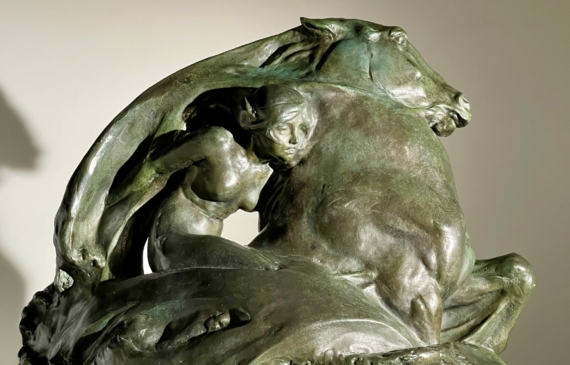
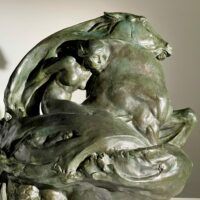
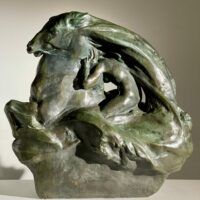
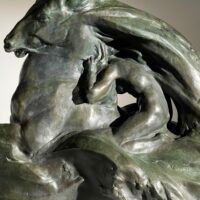
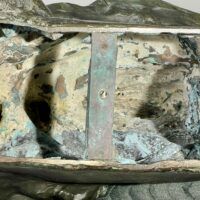
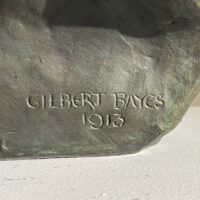
Gilbert Bayes (British, 1872-1953)
The Sea King’s Daughter, 1913
Bronze, green and brown patina
18 ¼ H. x 18 W. x 10 D. inches
Signed on base: GILBERT BAYES / 1913
Gilbert Bayes was born on April 4th, 1872 in London, England. He grew up in North London, near barracks, which later may have influenced his interest in horse processions. His family was full of artists, his father was Alfred Walter an established artist at the time, his brother was Walter Bayes, an artist and critic, and his sister was Jessie Bayes, an Arts and Crafts artist. He attended the City and Guilds London Art School. Later, from 1896 to 1899 he attended the Royal Academy Schools. Here he obtained a gold medal and a traveling scholarship to Paris. He was a student under Sir George Frampton and Harry Bates which meant he became associated with the British New Sculpture Movement.
His accomplishments were numerous. In 1889, Bayes had an exhibition at the Royal Academy when he was just 17. Then, in 1900 he received an honorable mention at the International Convention. He received further medals at the Paris Salon. In 1903 he received his first architectural commission after entering a competition to design a bronze relief panel for the façade of the New South Wales Art Gallery. Then in 1925 he won the gold medal and diploma of honor at the Exhibition of Decorative Art. And he was part of the sculpture event at the 1928 Summer Olympics. By 1925 he was the master in the Art workers’ guild. He also was the president of two separate groups: the Royal British Society of sculptors (1939-1944) and the Ealing Art Group (1947-1953).
The impact of Bayes’ work cannot be overstated. He was the most prominent British artist of public sculptures of the early 20th century and especially well known for his memorial work and decorative designs. He made works from chess pieces to architectural panels and clocks. In particular, he is well known for the Queen of Time clock on the facade of Selfridges department store in Oxford Street, London. Most of this work was done in bronze, stone, and marble. His style is focused on blending form and color, fantasy and legend. It is also both romantic and compelling. He made it a point to make sculptures that would be accessible to the everyday man while making them equally interesting and intellectual.
He died in London in 1953. He has a gallery named after him at the Victoria and Albert Museum as well as an award named after him for early career sculptors at the Royal British Society of Sculptors.